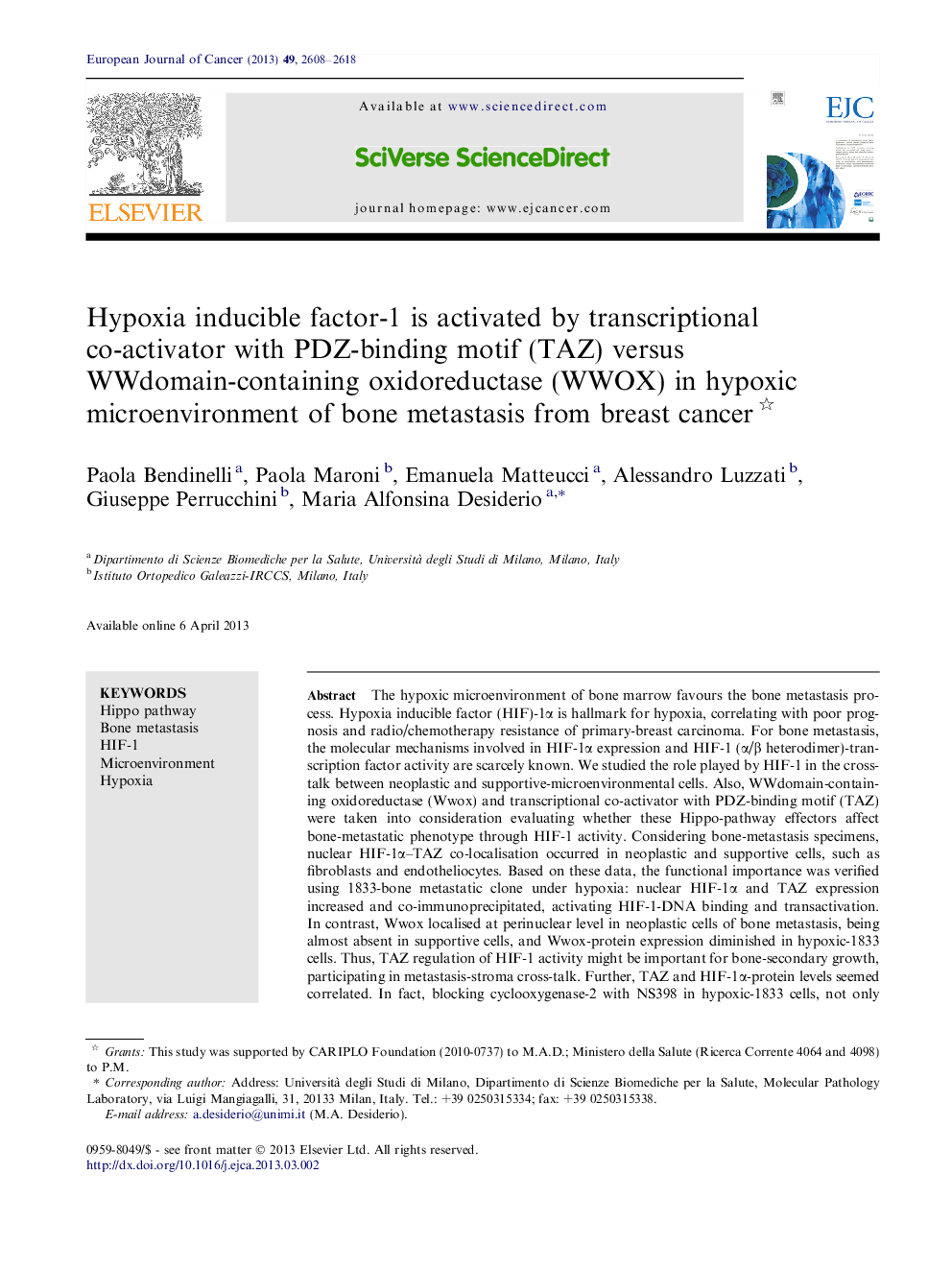| Article ID | Journal | Published Year | Pages | File Type |
|---|---|---|---|---|
| 8444305 | European Journal of Cancer | 2013 | 11 Pages |
Abstract
The hypoxic microenvironment of bone marrow favours the bone metastasis process. Hypoxia inducible factor (HIF)-1α is hallmark for hypoxia, correlating with poor prognosis and radio/chemotherapy resistance of primary-breast carcinoma. For bone metastasis, the molecular mechanisms involved in HIF-1α expression and HIF-1 (α/β heterodimer)-transcription factor activity are scarcely known. We studied the role played by HIF-1 in the cross-talk between neoplastic and supportive-microenvironmental cells. Also, WWdomain-containing oxidoreductase (Wwox) and transcriptional co-activator with PDZ-binding motif (TAZ) were taken into consideration evaluating whether these Hippo-pathway effectors affect bone-metastatic phenotype through HIF-1 activity. Considering bone-metastasis specimens, nuclear HIF-1α-TAZ co-localisation occurred in neoplastic and supportive cells, such as fibroblasts and endotheliocytes. Based on these data, the functional importance was verified using 1833-bone metastatic clone under hypoxia: nuclear HIF-1α and TAZ expression increased and co-immunoprecipitated, activating HIF-1-DNA binding and transactivation. In contrast, Wwox localised at perinuclear level in neoplastic cells of bone metastasis, being almost absent in supportive cells, and Wwox-protein expression diminished in hypoxic-1833 cells. Thus, TAZ regulation of HIF-1 activity might be important for bone-secondary growth, participating in metastasis-stroma cross-talk. Further, TAZ and HIF-1α-protein levels seemed correlated. In fact, blocking cyclooxygenase-2 with NS398 in hypoxic-1833 cells, not only HIF-1α decreased but also molecular-mechanism(s) upstream of the Hippo pathway were triggered: LATS-dependent TAZ phosphorylation seemed responsible for TAZ nucleus/cytoplasm translocation and degradation. In the 1833-xenograft model, NS398 largely prevented the outgrowth of bone-metastatic cells, probably related to remarkable-extracellular matrix assembly. We gained clinical insight into HIF-1α and TAZ as candidate biomarkers for bone avidity, relevant for early-therapeutic intervention against bone metastasis.
Related Topics
Life Sciences
Biochemistry, Genetics and Molecular Biology
Cancer Research
Authors
Paola Bendinelli, Paola Maroni, Emanuela Matteucci, Alessandro Luzzati, Giuseppe Perrucchini, Maria Alfonsina Desiderio,
